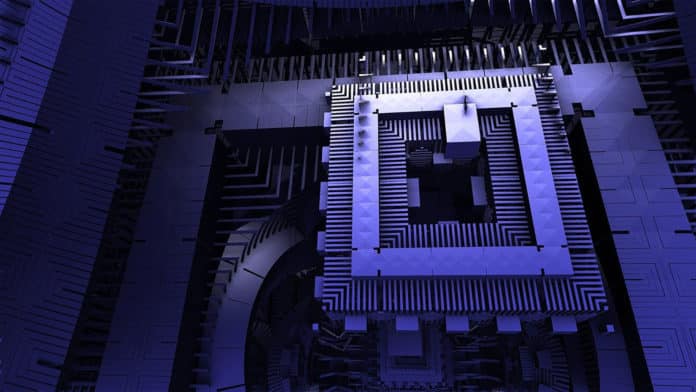Through a new study, scientists took a step forward towards more complex quantum simulations. The Institute for Quantum Computing (IQC) study performed the first-ever simulation of baryons—fundamental quantum particles—on a quantum computer.
An IQC faculty member, Christine Muschik, said, “It is the first simulation of baryons on a quantum computer ever. Instead of smashing particles in an accelerator, a quantum computer may one day allow us to simulate these interactions that we use to study the origins of the universe and so much more.”
Muschik, an associate faculty member at the Perimeter Institute, leads the Quantum Interactions Group, studies the quantum simulation of lattice gauge theories. Lattice gauge theory is a formulation of quantum field theory with gauge symmetries on a space-time lattice.
The more inclusive a gauge theory is of fields, forces, particles, spatial dimensions, and other parameters, the more complex it is—and the more difficult it is for a classical supercomputer to model.
Non-Abelian gauge theories are exciting candidates for simulations. They play a vital role in the stability of matter as we know it.
Classical computers can simulate non-Abelian matter, but such simulations are essential and inaccessible for regular computers. Yet, none has ever been simulated on a quantum computer.
In this study, scientists developed a resource-efficient quantum algorithm that allowed them to simulate a system within a simple non-Abelian gauge theory on IBM’s cloud quantum computer paired with a classical computer.
This study is an important step forward toward the quantum simulation of gauge theories far beyond the capabilities and resources of even the most powerful supercomputers in the world.
Jinglei Zhang, a postdoctoral fellow at IQC and the University of Waterloo Department of Physics and Astronomy, said, “What’s exciting about these results for us is that the theory can be made so much more complicated. We can consider simulating matter at higher densities, which is beyond the capability of classical computers.”
With the powerful quantum computers and quantum algorithms, scientists could now simulate the physics of these more complex non-Abelian gauge theories and study fascinating phenomena beyond the reach of our best supercomputers.
Journal Reference:
- SU(2) hadrons on a quantum computer, arXiv:2102.08920 [quant-ph] arxiv.org/abs/2102.08920
- Yasar Y. Atas et al., SU(2) hadrons on a quantum computer via a variational approach, Nature Communications (2021). DOI: 10.1038/s41467-021-26825-4
